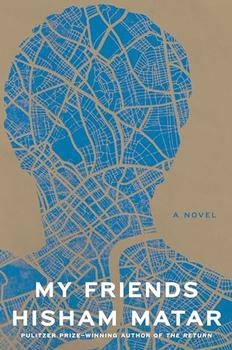Summary | Excerpt | Reviews | Beyond the Book | Readalikes | Genres & Themes | Author Bio

The Madness of American Incarceration
by Christine MontrossINTRODUCTION
Sonia and I are sitting in the lactation room of the prison where she is incarcerated. Neither of us needs the room for its designated purpose, but it's a room with a door. So it is one of the only places where I can conduct an evaluation without her answers being overheard by guards or other inmates. I arrange my papers, click open my pen, and ready myself to ask the questions that will help me determine whether Sonia has psychiatric symptoms severe enough to interfere with her ability to understand her charges and how the legal system works, or to prevent her from working constructively with her attorney to assist in her own defense.
Sonia is fifty years old. Her black hair is streaked with gray and pulled back into a tidy bun. She is neatly dressed in this prison's standard attire—loose denim pants with an elastic waistband, a maroon T- shirt, an oversize gray crewneck sweatshirt, and white slip- on canvas shoes. On my way to this room, I passed women ranging in age from their early twenties to their seventies, each wearing this same combination. All the clothes are identical, and none of them look new.
I open my mouth to begin the evaluation, but when I do, Sonia closes her eyes and inhales deeply through her nose. She opens her eyes, looks at me, and smiles politely. Then she inhales deeply again. And then a third time.
"Sorry, Doctor," she says sheepishly. "You smell like shampoo or something. It smells like heaven." I wonder where she's headed with this—is it a symptom or a provocation?—and then she apologizes again and looks a little embarrassed. "I hope I didn't make you uncomfortable. It's just that this is the first time I've smelled something good in seven months."
The lactation room is attached to the prison's visiting area, which looks like a combination of a high school cafeteria, with its long tables set up in parallel rows, and a day-care center. Seventy percent of America's incarcerated women are mothers of minor children, and the ratio in this facility is on par with that number. I come to this particular prison once or twice a month, and nearly every time there are children in the visiting room or waiting in the lobby for permission to enter. This morning a woman with a state Department of Children and Families badge waited behind me to pass through the metal detector, cradling a tiny infant.
"How old?" I asked her as I dropped my pen and wristwatch into a container and slid off my shoes.
"Two and a half weeks," she responded. "Mom's inside."
Adjacent to the rows of tables in the visiting room, a bright green area rug printed with cartoon figures and the letters of the alphabet covers part of the floor. Ant ... Boat ... Frog. Octopus ... Penguin ... Zebra. A dilapidated toy kitchen leans against one of the walls. Shelves stocked with worn picture books stand next to a wooden changing table—books that I read to my own children as they sat in my lap when they were young. Owl Moon, Olivia, and Amelia Bedelia.
This morning a woman in the denim pants and maroon shirt was sitting cross-legged on the alphabet rug. She held a nine-month-old boy in her lap and leaned intently toward another—her twins. I'd seen these babies visiting their mother here since they were three months old, and now, in jeans and little fleece jackets, they crawled and cooed at her. She laughed and clapped with them as she blinked back tears.
------
I had never been in jail before I became a doctor. I had an academic understanding of the many systemic challenges that face incarcerated people, but I could not have pictured this room or imagined this scenario. I had no real sense of what correctional facilities were truly like.
As a young physician finishing my training in psychiatry, I met with the director of my residency program to discuss my career. I knew there was an ongoing shortage of psychiatrists in America and that there were countless people who needed mental-health treatment across the country, let alone in my community. In the meeting, I shared with the director the job options I was weighing: an outpatient position in a program specializing in group therapy or a role on a locked inpatient unit as an attending psychiatrist for the most seriously ill patients in the hospital. I wanted a career that would be both meaningful and rewarding but also intellectually engaging. Which did she think I should choose?
From Waiting for an Echo by Christine Montross, published by Penguin Press, an imprint of Penguin Publishing Group, a division of Penguin Random House LLC. Copyright © 2020 by Christine Montross.




Discovery consists of seeing what everybody has seen and thinking what nobody has thought.
Click Here to find out who said this, as well as discovering other famous literary quotes!
Your guide toexceptional books
BookBrowse seeks out and recommends the best in contemporary fiction and nonfiction—books that not only engage and entertain but also deepen our understanding of ourselves and the world around us.